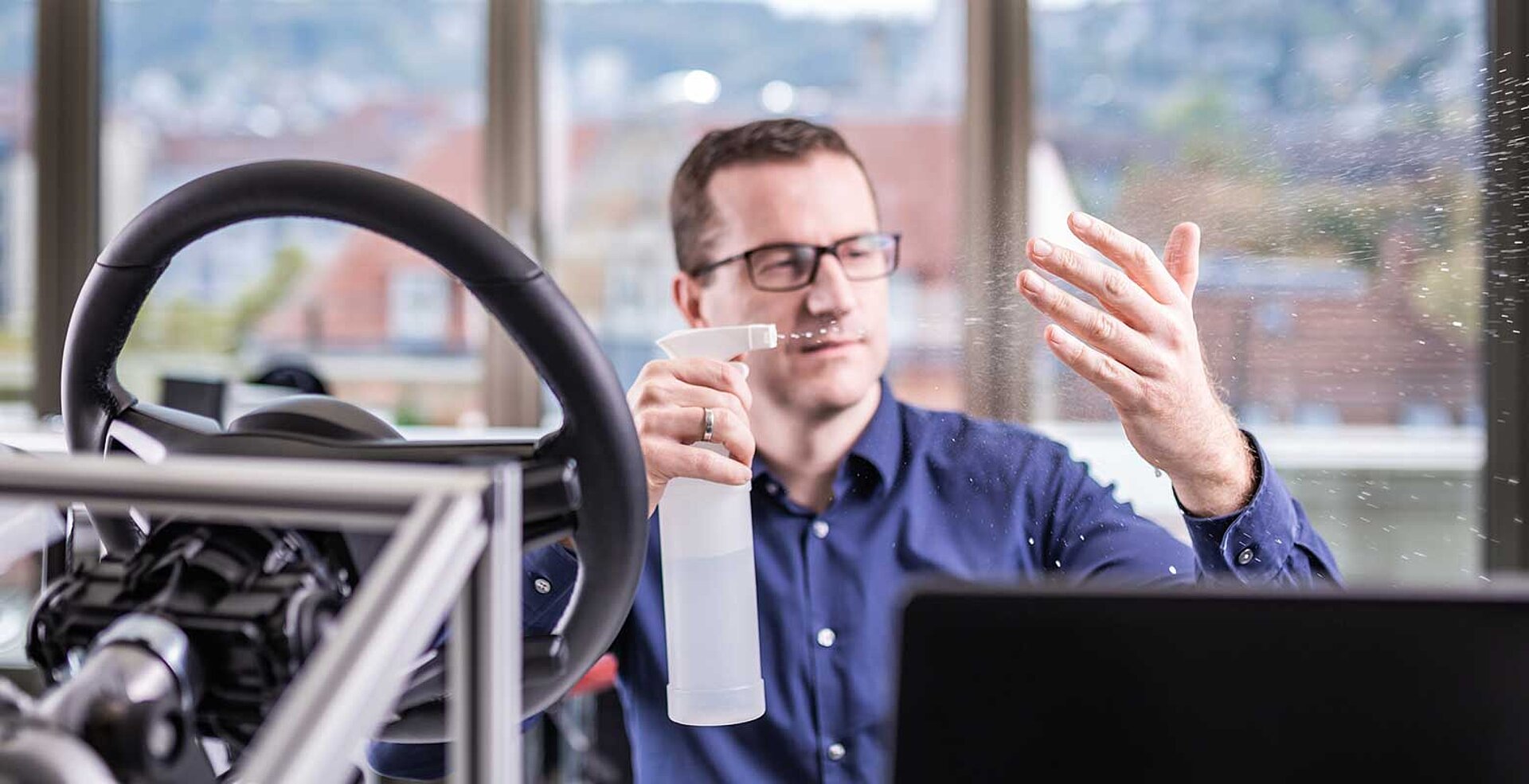
Press, wipe and grip
On behalf of various OEMs, the experts from Da Vinci Engineering examine the functionality of control concepts of future vehicle series.
The buyers of new cars are faced with numerous increasingly complex components and functions. Head-up display, cross-traffic warning systems, online navigation – new assistance and security systems are being added to cars with every new vehicle generation. Yet everything needs to be as easy to use as possible. That is no mean feat for vehicle engineers, since the technology which is installed is tremendously complex. Manufacturers are familiar with the problem, which is why they rely on operating structures that are as simple and intuitive as possible.
Testing controls from the user’s perspective
Da Vinci Engineering, the personnel services provider from Stuttgart, can help you with this. Our engineers validate the functionality of the controls in the vehicle. In other words, as a neutral intermediary between suppliers and vehicle developers, they test whether each of the controls works in the way that is required by law and expected by the customer from the perspective of the user. Da Vinci Engineering professionals collaborate closely with OEM engineers for this purpose. “As an external service provider, we always maintain a healthy distance from the product, and are therefore predestined for tracking down discrepancies and localising any errors,” explains Engineer Dirk Pühl, who has been working at Da Vinci Engineering for many years.
Fixed specifications regulate the complex collaboration
Collaboration between OEM and Da Vinci Engineering is always based on the same set of specifications. At the beginning, the manufacturer defines how the system should work. This is followed by the theory, comparing the manufacturer's wishes with statutory requirements. Is the size of the head-up display allowed? Does the location of the hazard warning lights switch fulfil the legal requirements? Could the infotainment system distract the driver too much?
This is followed by discussions with the suppliers. It must be clarified when they can deliver the initial prototypes. Test specifications are defined in the requirements specification and a test series is created. Gradually, a development schedule is created, with approval given by the manufacturer at the end.
Only then does the practical part begin. Test benches are set up, and individual controls are tested. If the correct display appears, are there any unwanted interactions? If the experts from Da Vinci Engineering discover any discrepancies, they usually clarify them directly with the supplier or the commissioning department. However, the engineers also record any errors in a database belonging to the manufacturer. Each malfunction is documented using measurement logs, and with photos if necessary.
The next step deals with functionality but also haptics, usually by means of a sample part from the 3D printer. The external professionals test the feel of the switches, buttons or touchpad, and whether the operating logic is correct. Are the signals being sent correctly, are the buttons assigned with the correct functions? The vehicle doesn’t comes into play until right at the end. The engineers from Da Vinci Engineering check the final installed part while driving on cordoned-off roads in Germany and Spain. However, test drives such as this are particularly interesting for the people and the materials during the winter months in Sweden or even Norway, when the on-board computer is displaying outside temperatures of minus 30 degrees. In any case, it is a lengthy process with considerable numbers of loops and tests until all parties involved give their OK.
Considerable developmental work for intuitive operation
The buyer of a car rarely knows about the tremendous amount of development work that is involved in creating even a small, inconspicuous component. Whatever it is: in the best case, the driver doesn’t even know whether he has just switched on the windscreen wipers or turned the radio down. Because he did it intuitively, without thinking about it. If every switch, touchscreen and touchpad works as expected and if customers are satisfied when they put away their car in the garage at night, then the specialists from Da Vinci Engineering also know that they have done everything right.



